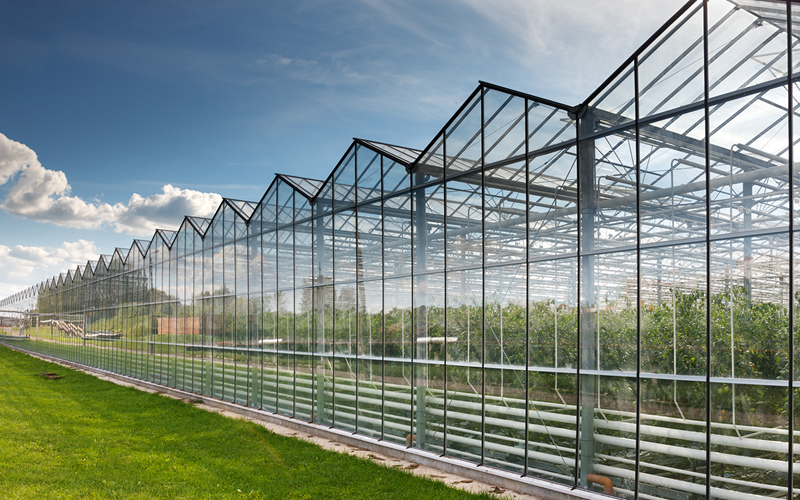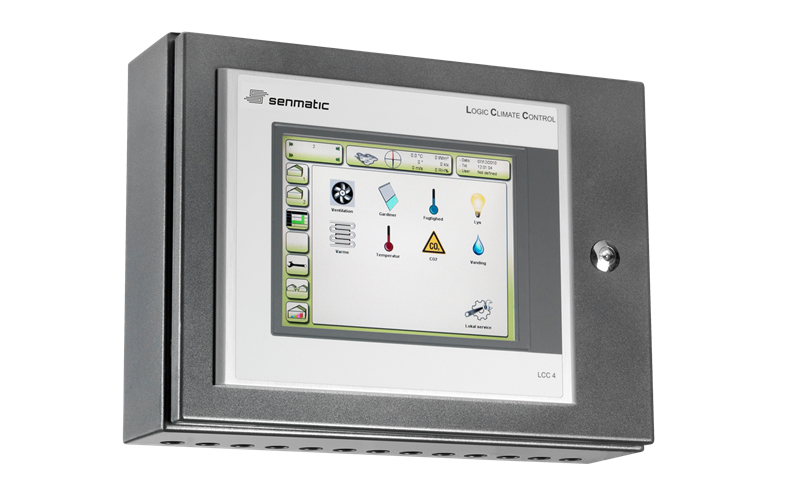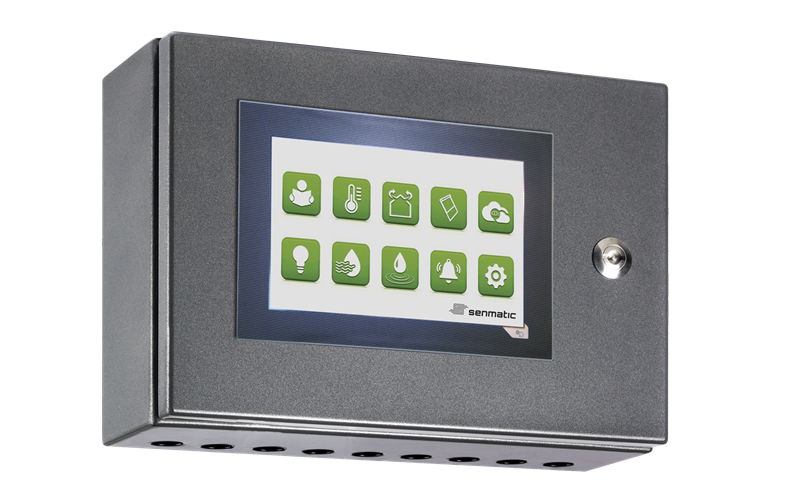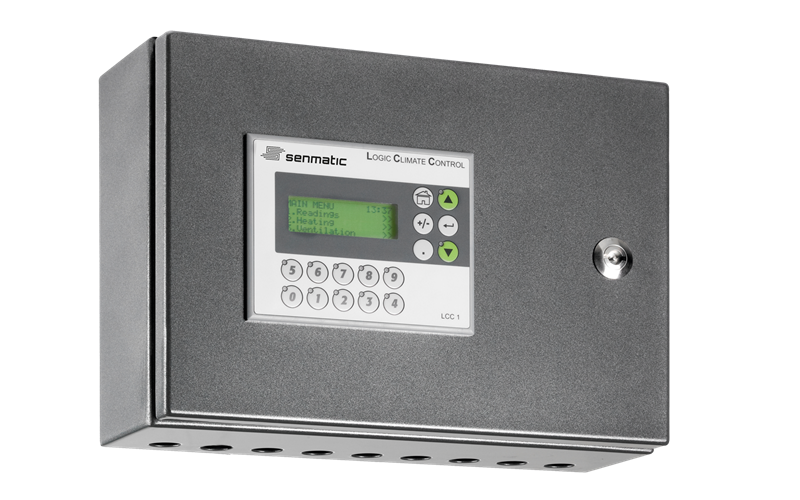Create The Ideal Growing Conditions For Your Crop
Crops grown in commercial greenhouses need optimal climate conditions to grow properly and efficiently. The climate of commercial greenhouses consists of not only temperature conditions, but also humidity, lighting, nutrients, irrigation etc.
Greenhouses are delicate ecosystems that need high quality climate control to ensure the best growing conditions. The different climate components and processes need to be adjusted to one another – and this is most effectively done through electronic climate control.
Why climate control can be vital for your production
Climate control enables you to monitor and control complex processes in greenhouses to create the optimal climate for your plants.
All commercial growers have extensive knowledge about their own crop, however manual climate control lacks data insights and a higher degree of controllability. Maybe you know the right temperature, the correct amount of light and the optimal irrigation processes. But do you know if they could be even better – and create even higher crop quality?
The electronic climate control creates several benefits for your production. The main advantage is created through a focus on data, which lets you become more intelligent with your production processes and your own business.
The data lets you explore optimal growth conditions across seasons, lets you control your future climate based on previous data – and it further gives you a visual insight to better understand various processes. All of this will lead to the possibility of increased production output and higher product quality.
The more accurately you are able to control your greenhouse climate, the more beneficial it is for you and your crop. The accuracy comes with automation.
Automation is key to improving efficiency and saving resources, as several processes and adjustments are handled automatically by the climate computer – whenever they are most needed.
The automated climate control further eliminates several manual errors through continuous monitoring, accurate control and the ability to alarm you if errors occur. The accuracy, controllability and prevention of errors help you save energy, water and nutrients, because the system automatically adjusts to specific circumstances – or notifies you about inexpedient conditions.
6 primary benefits of electronic climate control
- Increase production output and yield
- Ensure higher crop quality
- Improve efficiency and save resources
- Prevent waste of energy, water and nutrients
- Improve growing precision through accurate control
- Ensure a minimum of errors with a user-friendly and data-driven climate computer

The extent of climate control depends on your specific needs
All sizes of commercial greenhouses can benefit from electronic climate control. The larger the production, the larger the need for electronic climate control, as there are critical savings to gain.
Smaller greenhouses, though, are also able to benefit from climate control – but the choice of climate computer will differ.
It is important to always work on the basis of your specific greenhouse, and here are some of the considerations to make when choosing your climate computer:
- Firstly, your choice of climate computer depends on the number of compartments you have in your greenhouse. If you have more than one compartment, you will need to consider whether you need several 1-compartment climate computers or one climate computer that can control more compartments through the same system.
- Secondly, if you already operate with LED grow lights in your greenhouse, it will be an advantage for you to choose a climate computer, where you can integrate the control of your LED lights. This way, you will be able to control all climate components from just one system.
- Thirdly, your demands for how advanced the system should be will impact your choice of computer. If you need visual overview, a wider data collection and control over as many climate features as possible, you will need a more advanced high-capacity computer.
- Lastly, you need to consider possible future expansions or changes in your production. If you wish to expand with more compartments or cultures in the future, you need a climate computer that will be able to expand and change with your business.
Different climate computers – adapted to different greenhouse needs
The Logic Climate Control (LCC) computers from Senmatic control all climate components, but there are three different versions, which makes them adjustable to the needs of different growers – from basic to high-capacity.The software in 3 variants supports future expansions, where only new hardware needs to be purchased, not new software. This is a primary feature, where the climate computers from Senmatic stands out from other climate computers on the market.

LCC4: The high-capacity climate control
The LCC4 is the high-capacity climate computer. It is possible to control up to 16 different compartments from the same computer, where an expansion box is connected to each compartment; the computer instructs, the boxes execute.
The LCC4 is for growers with advanced climate control demands, but it is extremely user-friendly. It communicates via Ethernet with the installed expansions – therefore it is flexible for future expansions, where only new hardware needs to be purchased, not new software.
The LCC4 and SuperLink
The several functions of the LCC4 make it a great choice for growers with demand for advanced data management and the highest degree of control in one or more compartments.
It is possible to invest in the LCC4 without the SuperLink, but the computer alone does not collect data – SuperLink does. Therefore, it is SuperLink that enables advanced data management, sends commands to the computer to react on, saves historic data, connects to fertilizers and makes the climate computer accessible from a central installed pc.
The LCC4 includes the following features:
- Software supports future hardware expansions
- 4 ventilators with 4 temperature sensors
- 8 layers of curtain (shading and black-out)
- 6 time zones
- 3 steps of grow light (HPS)
- 4 heating valves
- Co2 control
- Light controller including LED installations (light amount, different light/time zones, triple tariff)
- Aircon and pad fan control
- Alarm output
- Integration to SuperLink
- Available in several languages
- And several more….
LCC2: All-over climate control in one compartment
The LCC2 climate computer is not as extensive as the LCC4, but it is extremely relevant for smaller greenhouses, who wish to still have full control of the climate conditions.
The LCC2 only controls one compartment at a time, and therefore it is mostly relevant for growers with greenhouses of one or only a few compartments.

LCC2 and Co2 control
One of the primarily relevant functions of the LCC2 is the Co2 control, which is highly relevant for photosynthesis, and therefore needs to be added in greenhouses. The LCC2 measure Co2 levels and controls a valve to ensure the best possible Co2 conditions – no matter the time of day and time of year.
The LCC2 includes the following features
- Software supports future hardware expansions
- 2 heating valves
- 2 circulation pumps
- 2 ventilators
- 1 shading
- 1 black-out
- 1 suppl. light
- Co2 control
- 1 irrigation valve and 1 misting valve
- 1 fan
- Alarm output
- Integration to SuperLink
- Available in several languages.

LCC1: Basic climate control
The LCC1 climate computer is the basic of the LCC computers and is optimal for growers with less data and control demands and a smaller commercial greenhouse. The LCC1 is able to control temperature, humidity, light and screen in one compartment at a time.
The LCC1 climate computer is also available for tunnels.
LCC1 for the smaller greenhouse
The functions of the LCC1 enable you to control several of the most vital climate features in your greenhouse, but it is much less advanced than LCC2 and LCC4. The LCC1 does not give you access to extensive data management through SuperLink, and it is not as flexible if you have future plans of expansion. However, the LCC1 still provides you with more automated and accurate control than manual climate control.
The LCC1 includes the following features
- Softwaren supporterer fremtidig hardware-udvidelse
- 1 varmeventil
- 2 ventilatorer
- 1 skyggegardin
- 1 vækstlys
- 1 vandingsventil
- Alarmudgang
- Fåes med flere forskellige sprog
